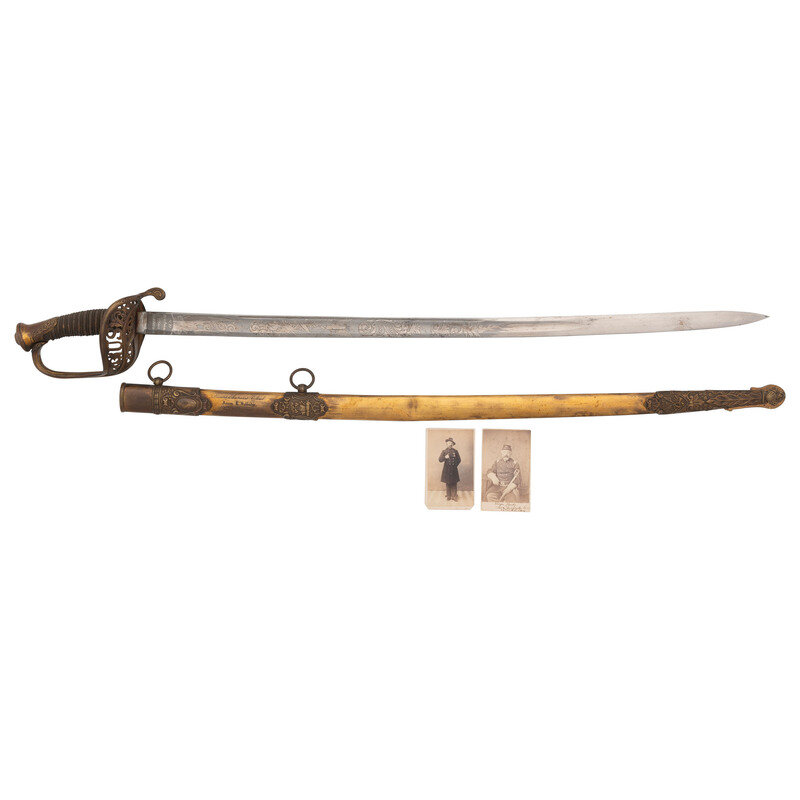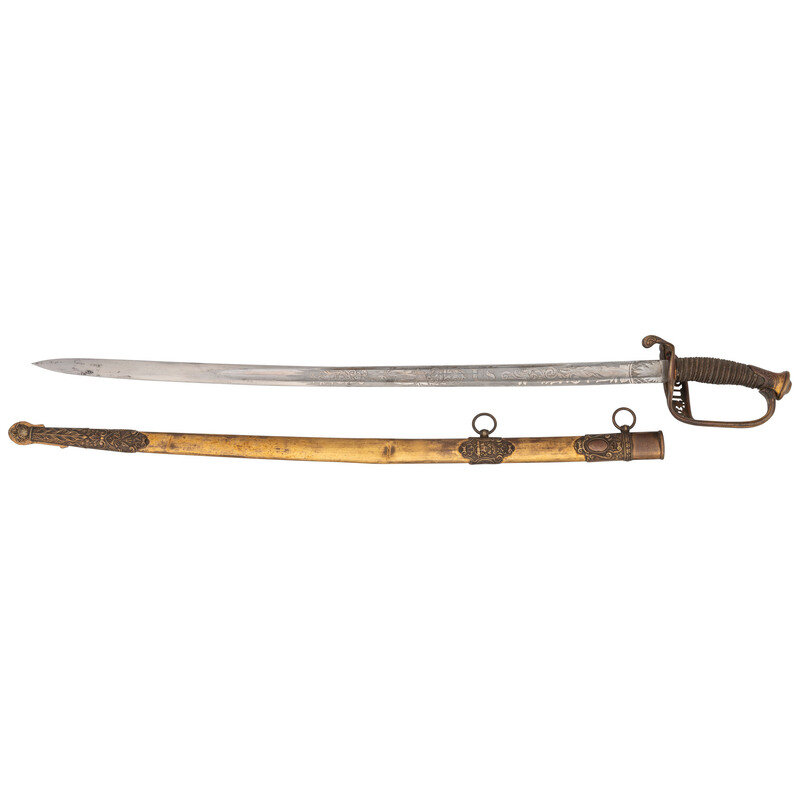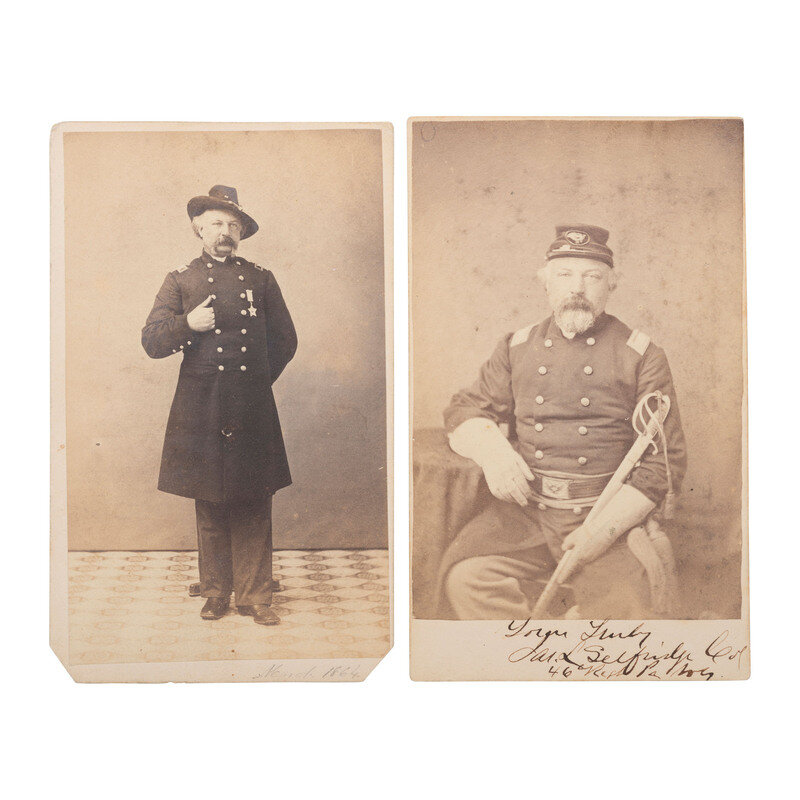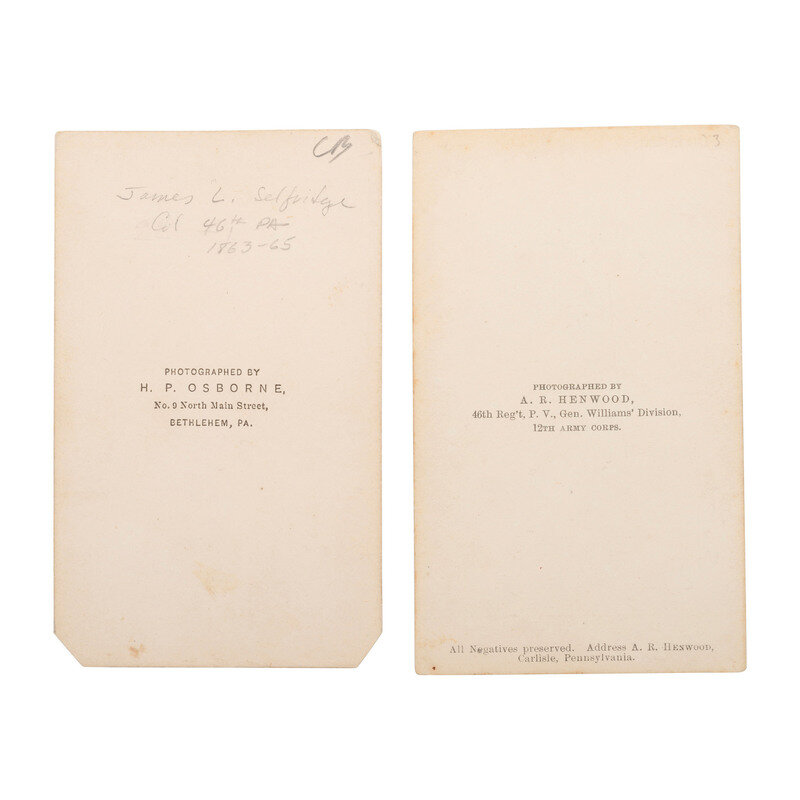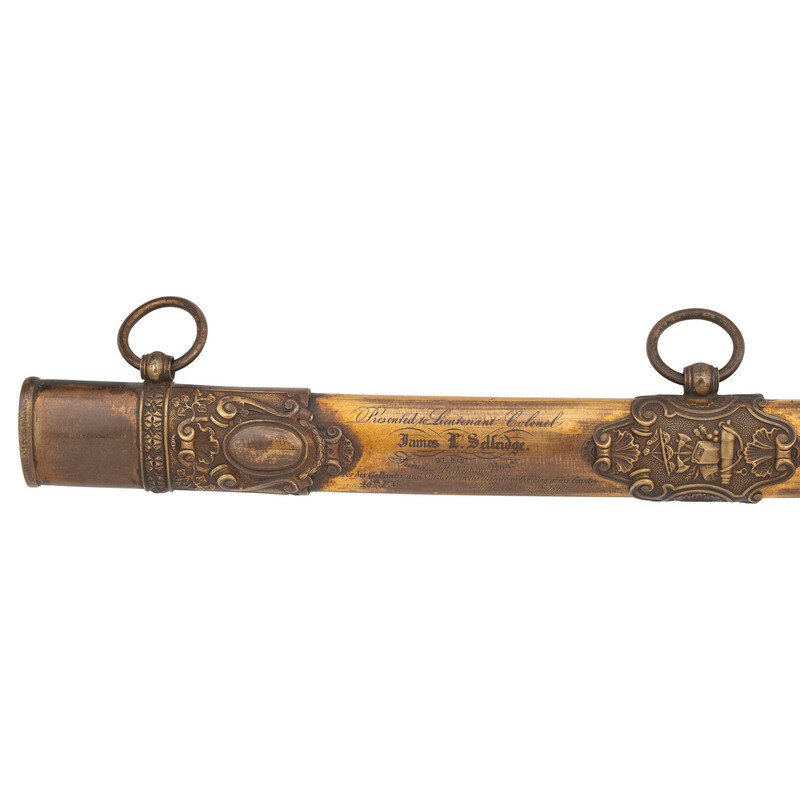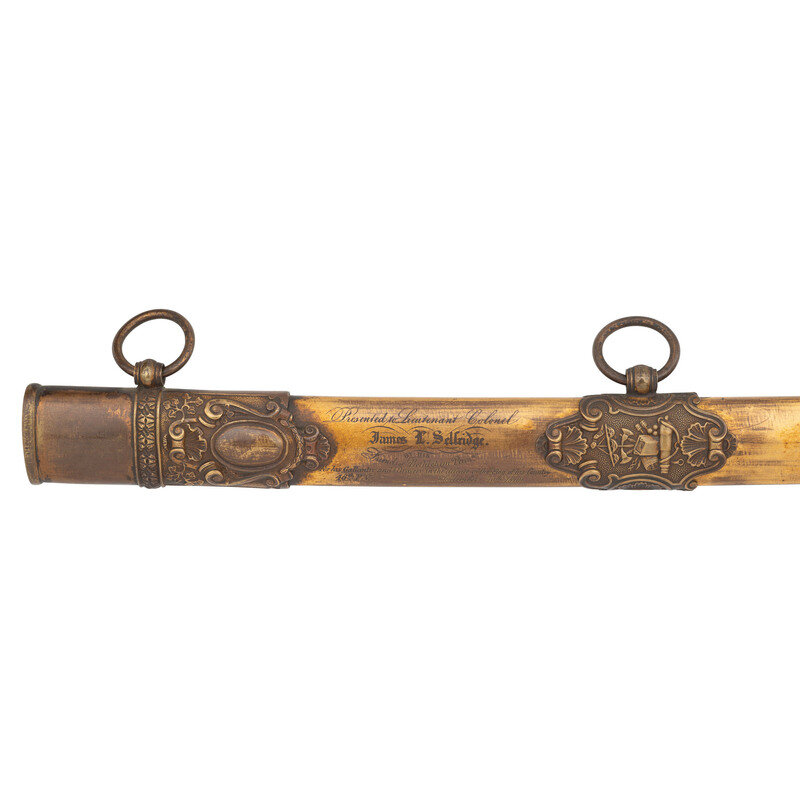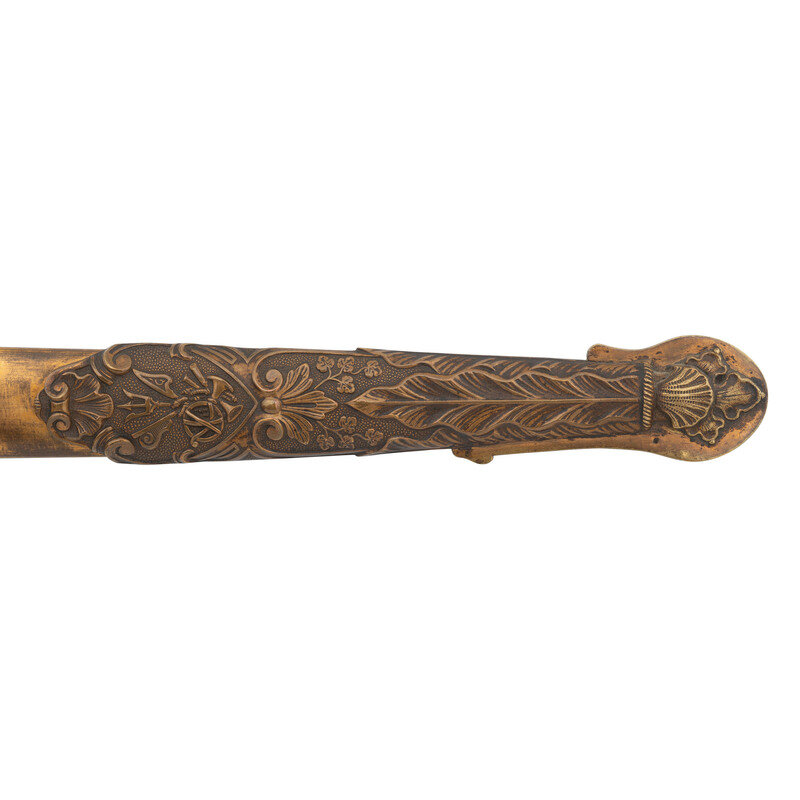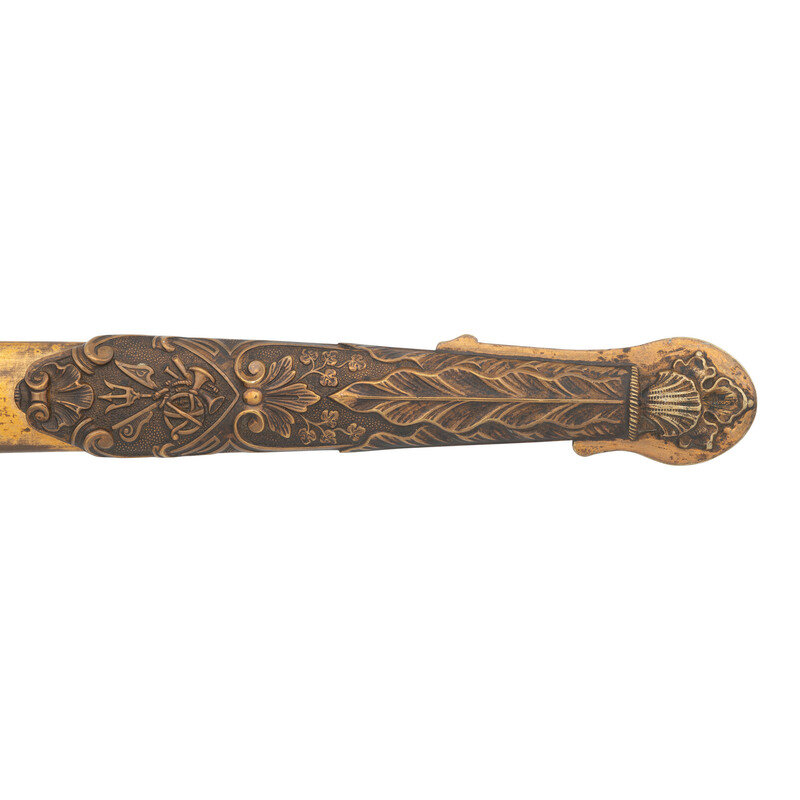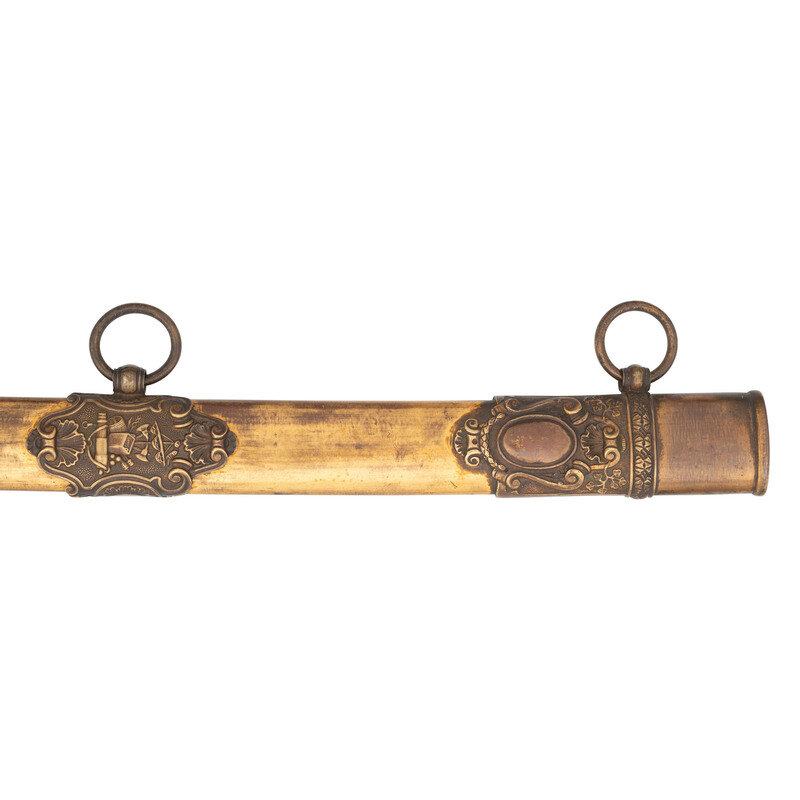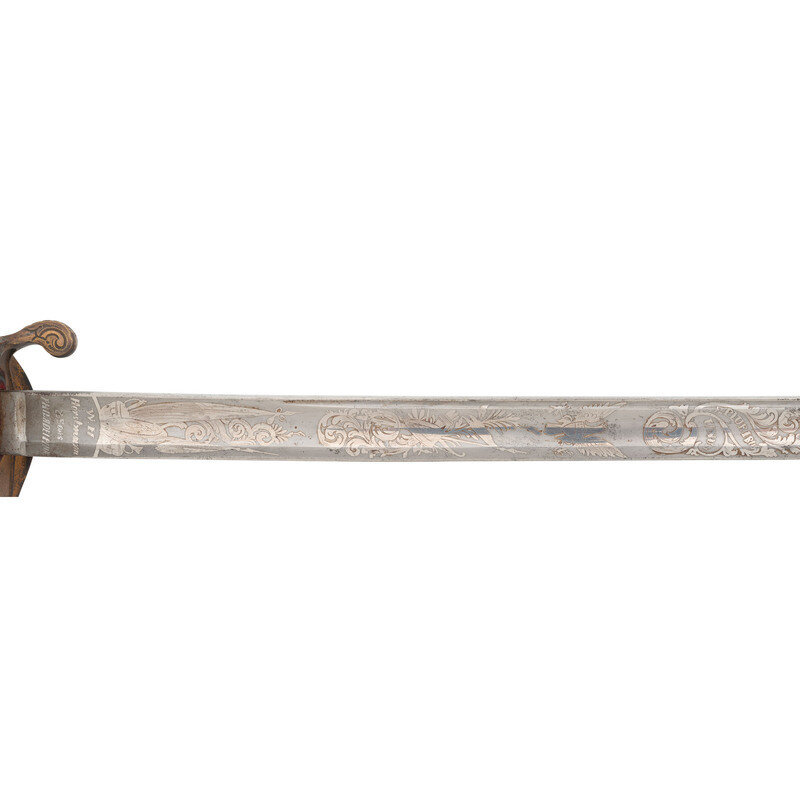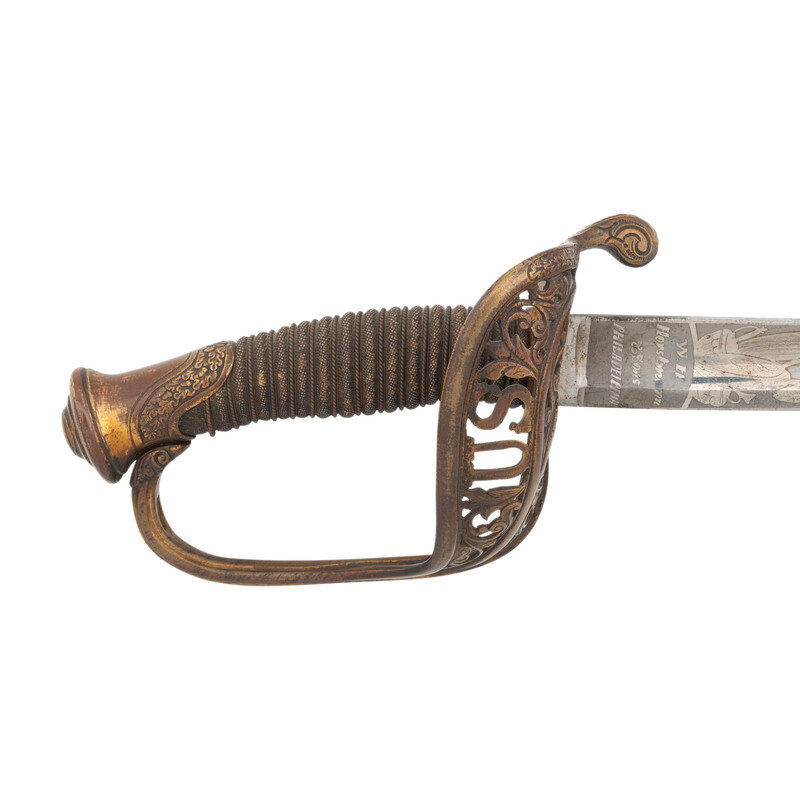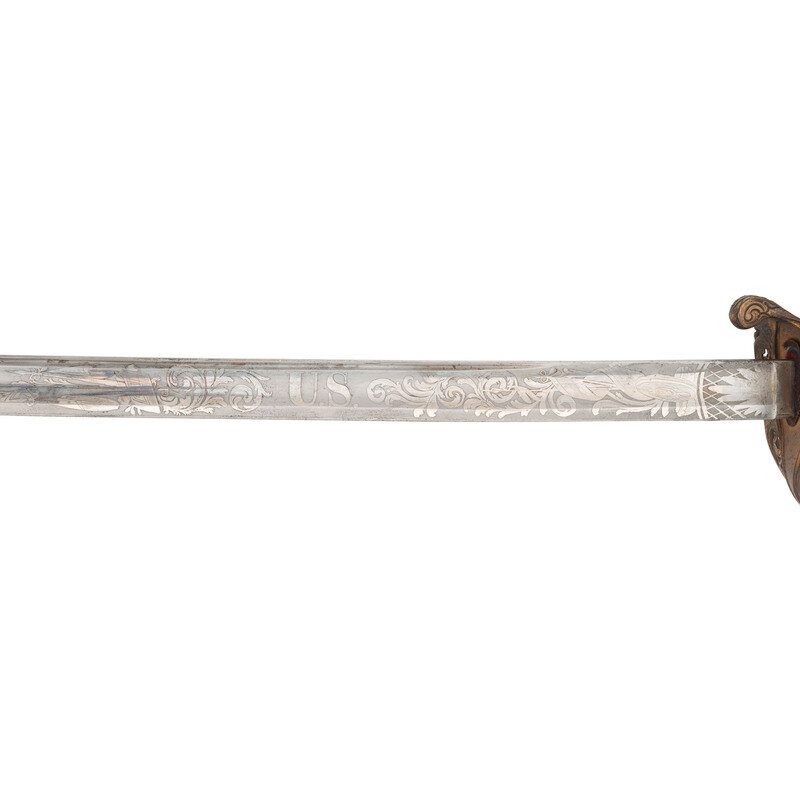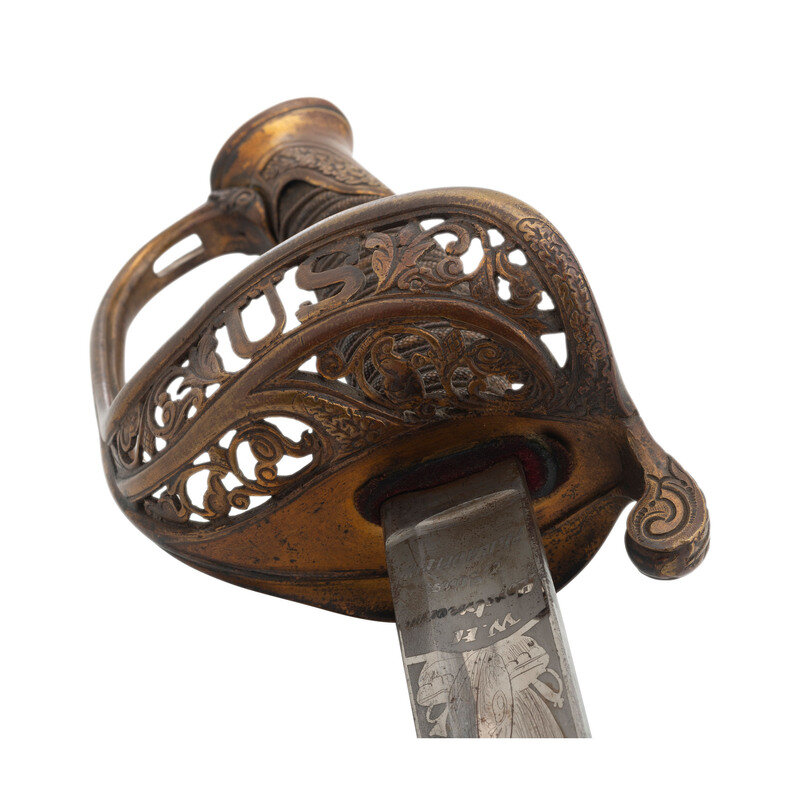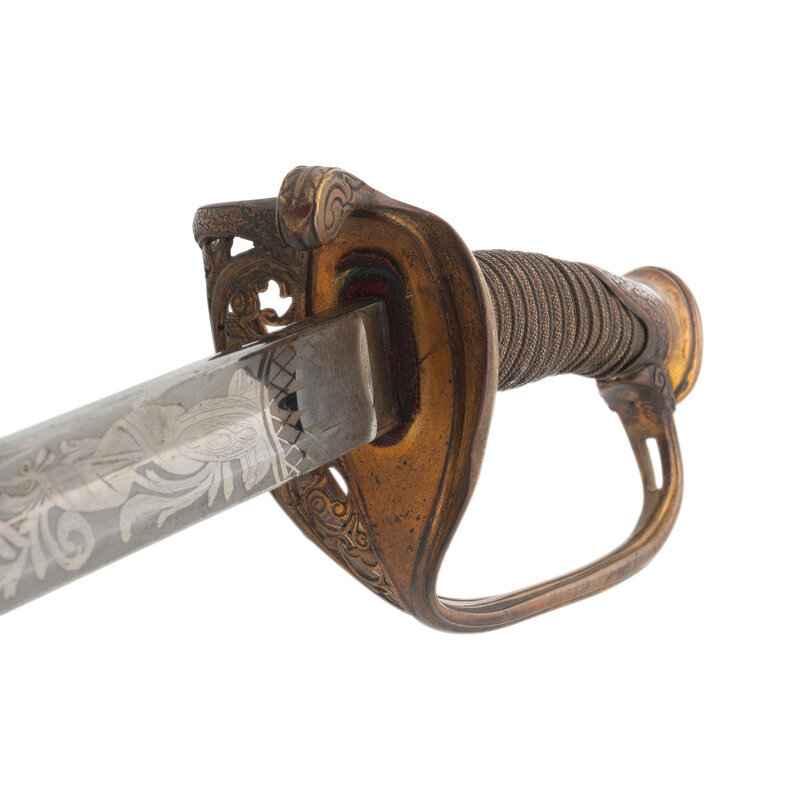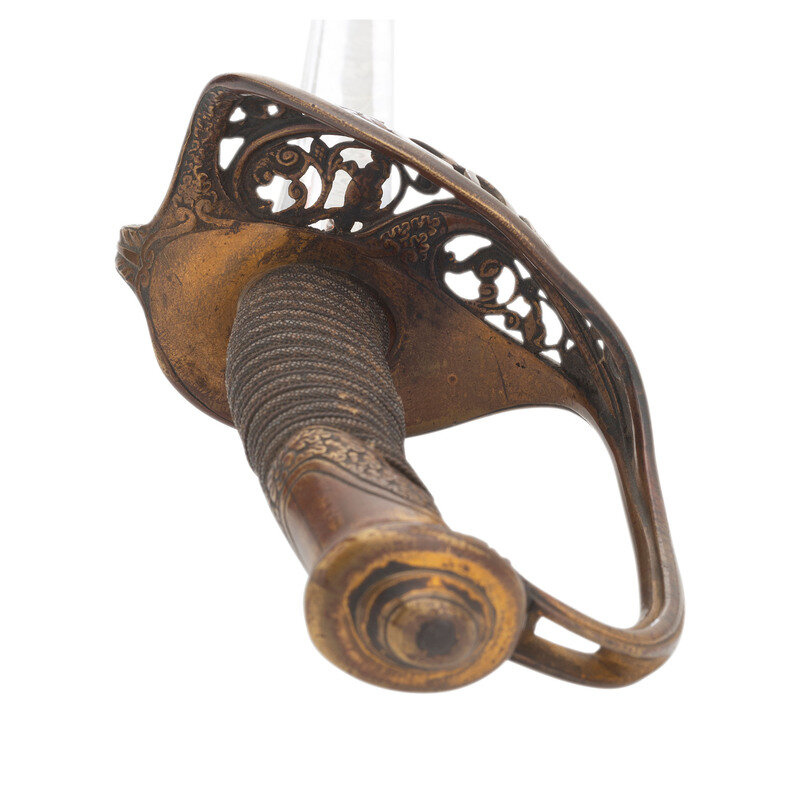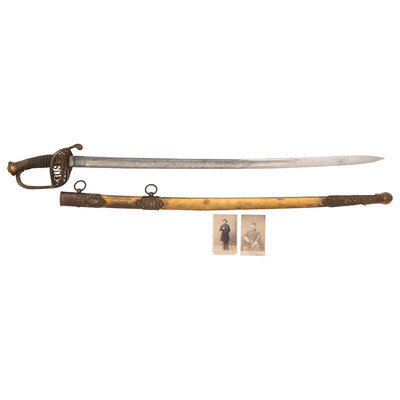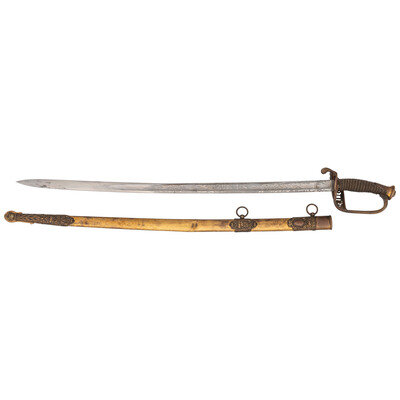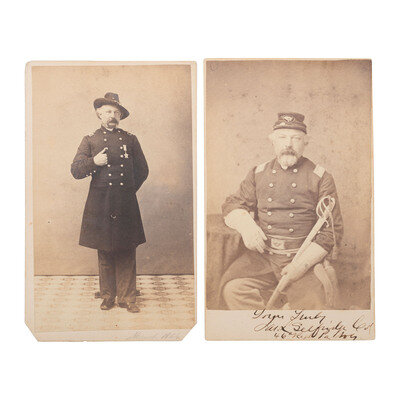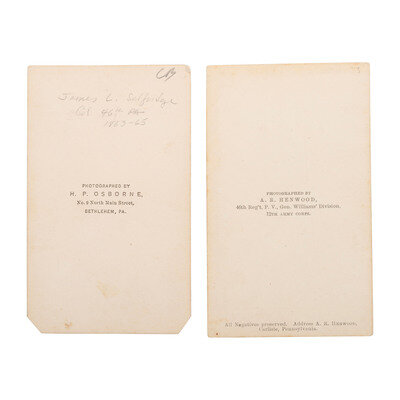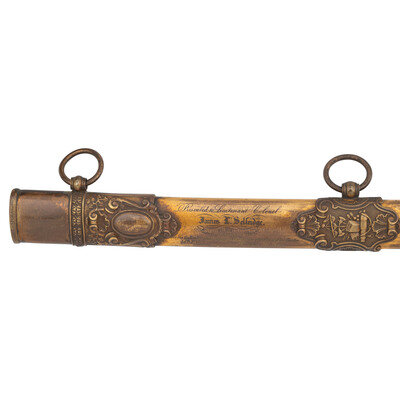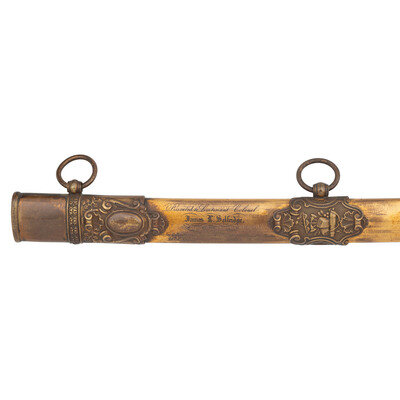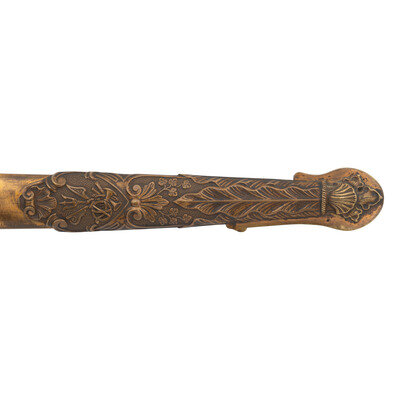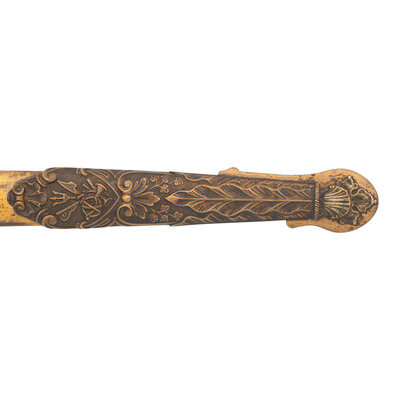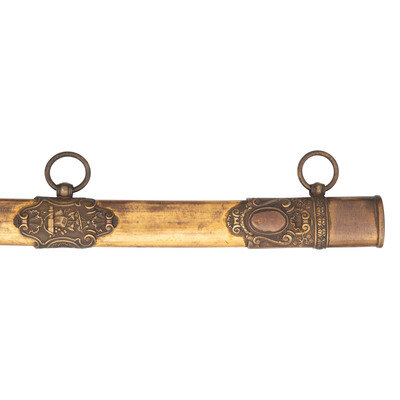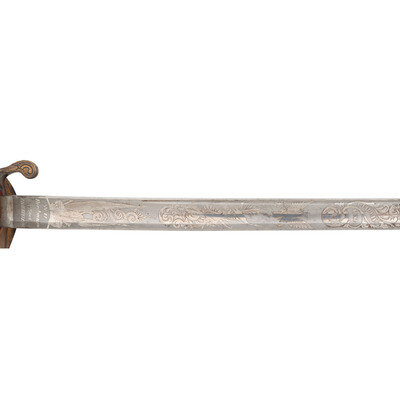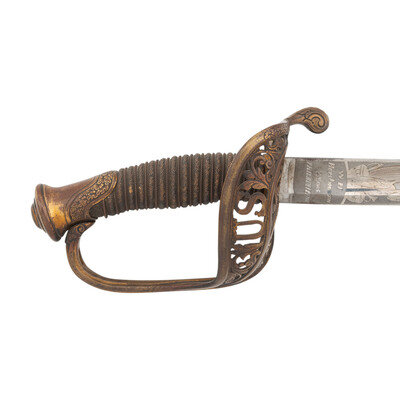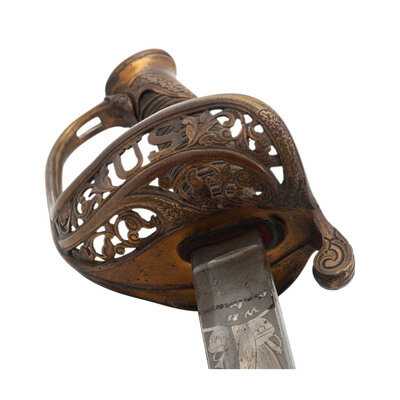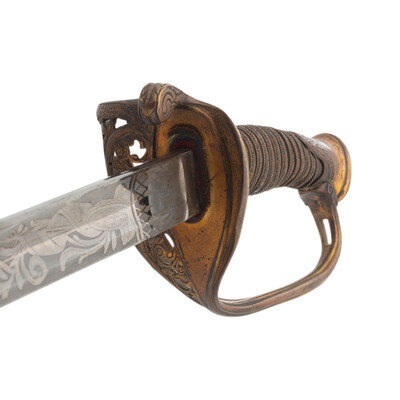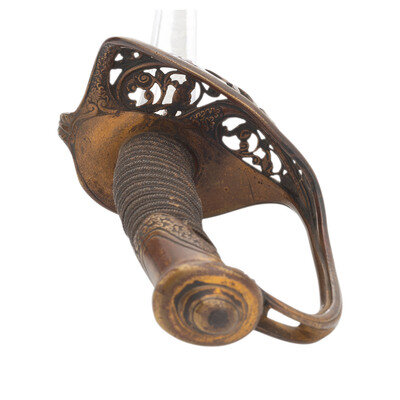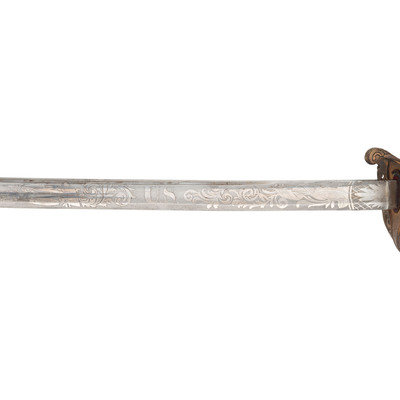Condition Report
Contact Information
Auction Specialists
Lot 25
Lot Description
31" slightly curved singled-edged spear point blade with 21.5" stopped median fuller and a narrow 12.25" secondary fuller near the spine, 1.05" wide at ricasso. 37.25" in overall length, with a 6" gilt brass hilt with floral motif guard and the letters US on the face. Grooved wood grip with shagreen cover and sixteen wraps of multi-strand wire with a twisted center wire and plain flanking wires. Blade is etched W.H. / HORSTMANN / & SONS / PHILADELPHIA on the obverse ricasso and features flowing foliate scroll motifs, panoplies of arms and patriotic and martial themes on both sides with a {Spread-Winged Eagle} and E Pluribus Unum on the obverse and US on the reverse. The sword is accompanied by its gilt brass scabbard with chased brass mounts which is engraved on the obverse between the two mounts: Presented to Lieutenant Colonel / James L Selfridge / BY HIS / Friends of Bethlehem, Penna / For his Gallantry and Bravery in the defense of the Flag of his Country / 46th PV September 10th, 1862.
James L Selfridge was in the mercantile business in Bethlehem, PA when he was commissioned at 36 years old as the Captain of Company A, 1st Pennsylvania Infantry on April 20, 1861. The regiment was a 90-day unit that never saw any combat and was mustered out of service on July 27, 1861. On August 8, 1861 Selfridge was commissioned the lieutenant colonel of the 46th Pennsylvania Infantry which was officially mustered into service at Harrisburg on October 31, 1861. The regiment's early service was at Harpers Ferry, but in early 1862 part of the regiment fought at Kernstown and Middletown (May 24, 1862) with the entire regiment present at the Battle of Winchester the next day. The regiment fought at Cedar Mountain, in Pope's Valley Campaign, and Antietam that year. Lt. Colonel Selfridge's report regarding the regiment at Antietam is in the Official Records of the War of Rebellion and describes the regiment being heavily engaged in the cornfield early on the morning of the battle and their rally to defend an artillery battery later that morning. Their colonel was promoted to brigadier general on November 29, 1862, leaving Selfridge in command of the regiment.
In 1863 the regiment participated in the Mud March in January and then fought at Chancellorsville. On May 10, Selfridge was promoted to colonel. The regiment fought at Gettysburg and fought primarily around Spangler's Spring and Culp's Hill on July 2 and was relocated to a reserve position in the center of the line on July 3. In October of 1863 along with the balance of the 12th Corps the regiment moved to Tennessee where it was made part of the 20th Corps in the Army of the Cumberland. The regiment fought through the Atlanta Campaign including Resaca, New Hope Church and Peach Tree Creek and then joined Sherman's March to the Sea. They fought through Georgia and the Carolinas and were present at the Battle of Bentonville and Johnston's surrender of the Army of Tennessee at Durham Station. The regiment then participated in the Grand Review in Washington, D.C. Selfridge was made a brigadier general by brevet on March 16, 1865.
He died in Philadelphia on May 19, 1887 at the age of 62. The sword was presented by his friends and business associates in Bethlehem, PA and forty-five of them signed the letter that accompanied the gift of the sword and assorted accoutrements to him on September 12, 1862.
Copies of the letter gifting him the sword as well as newspaper articles about the sword are included in the accompanying binder. Two CDVs of Selfridge are included (one signed), along with a blown up framed image of him, as is the binder of research and documentation. This sword is published in Inscribed Union Swords 1861-1865 by David Stroud and was formerly in the author's collection. A collection of Selfridge material, including this sword was advertised for sale by Don Ball in the March/April issue of Man at Arms in 1979 for $8,500.
From the Collection of George Oldenbourg
